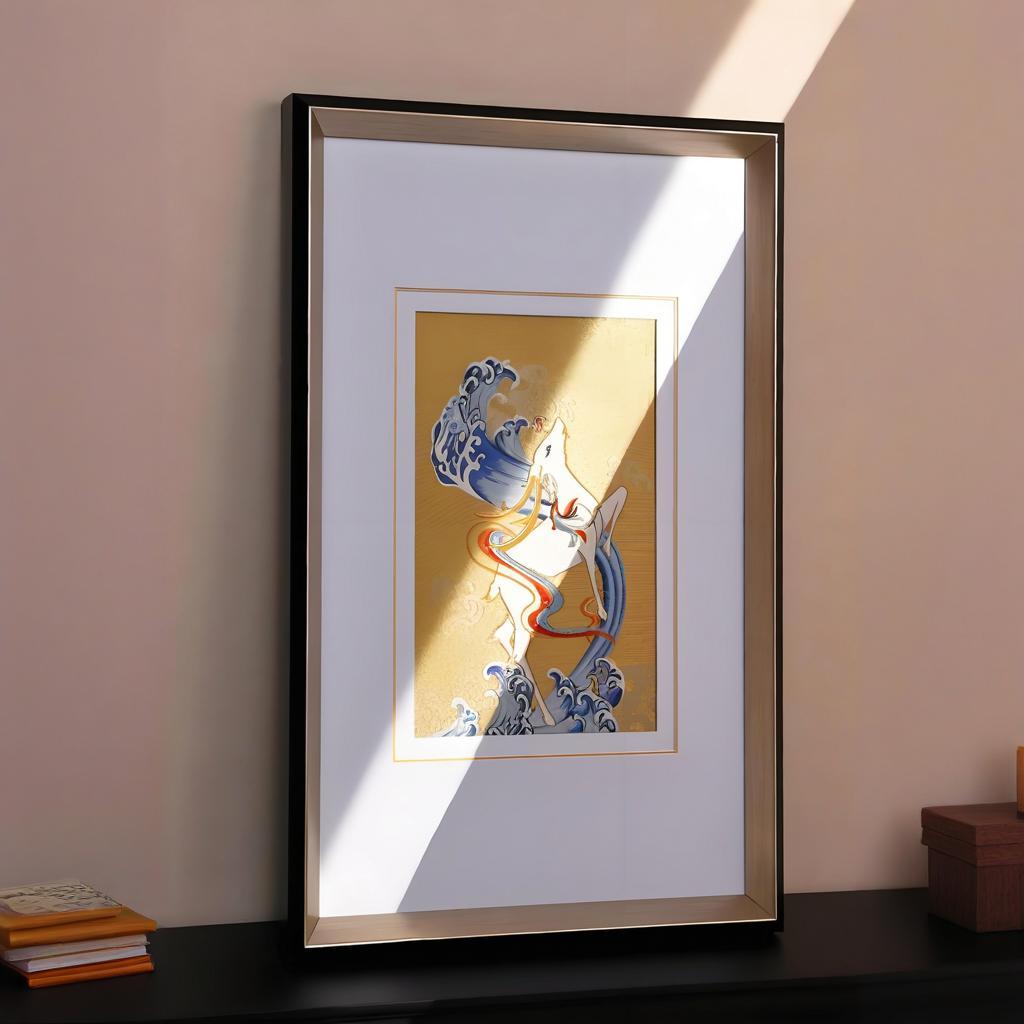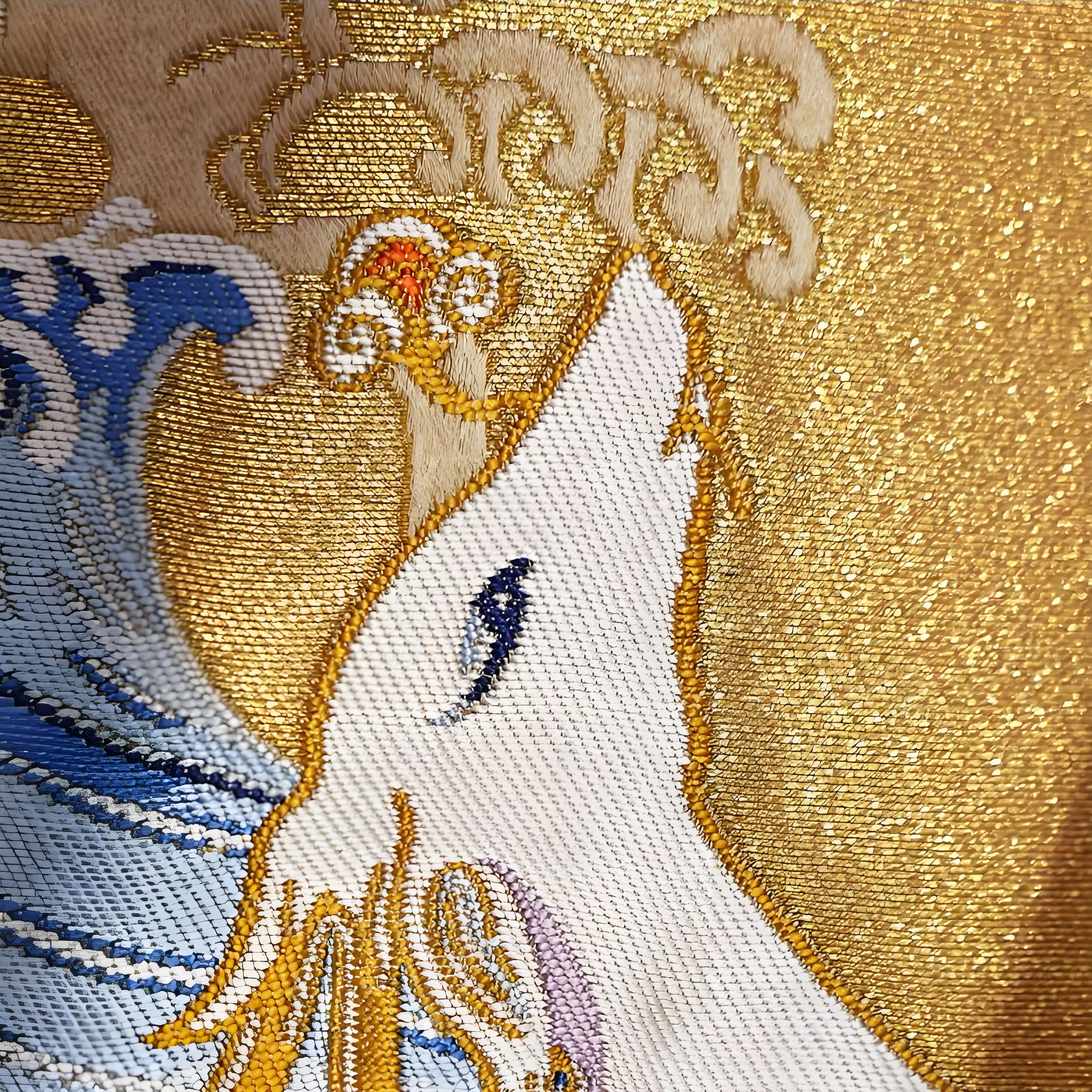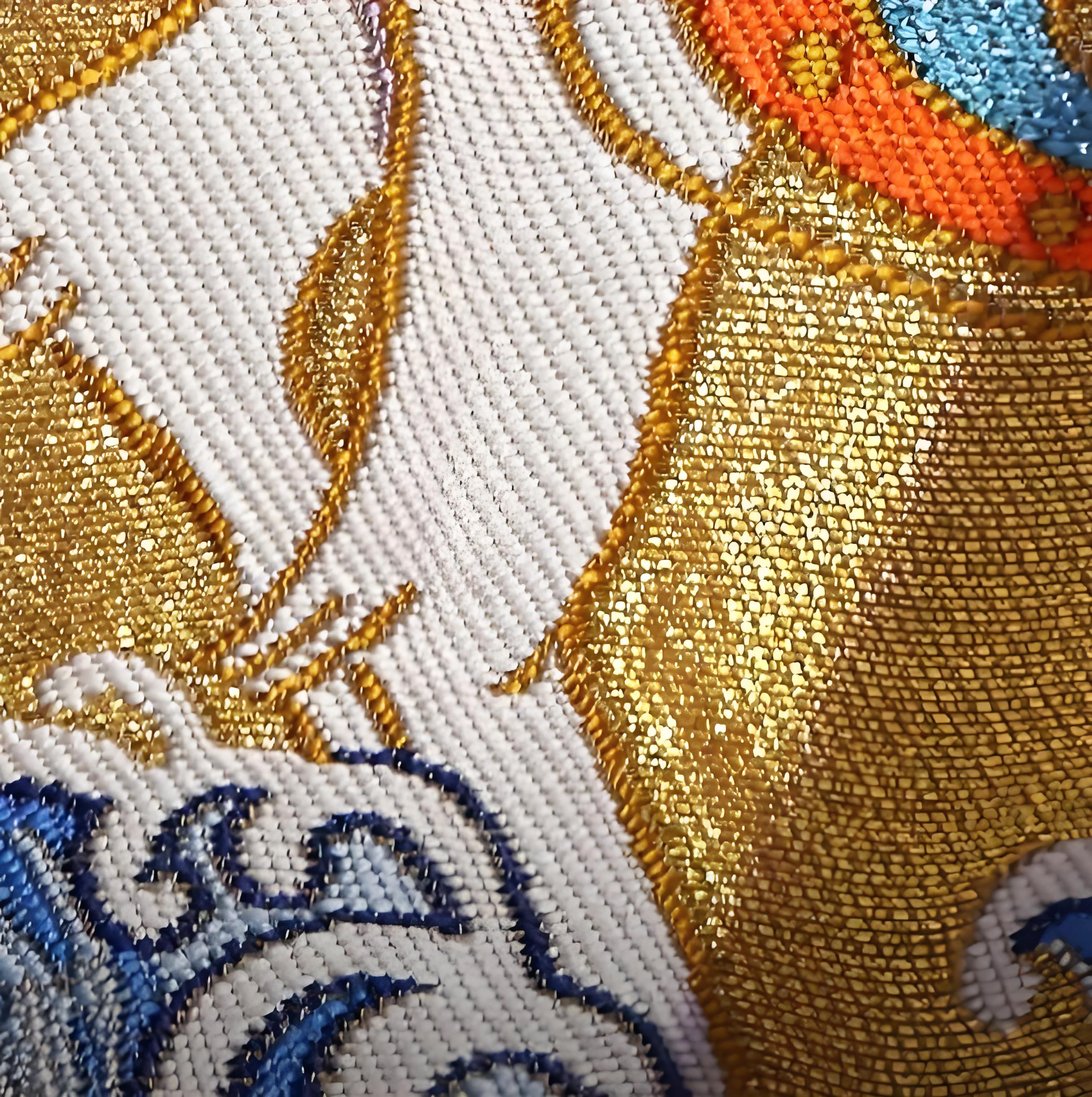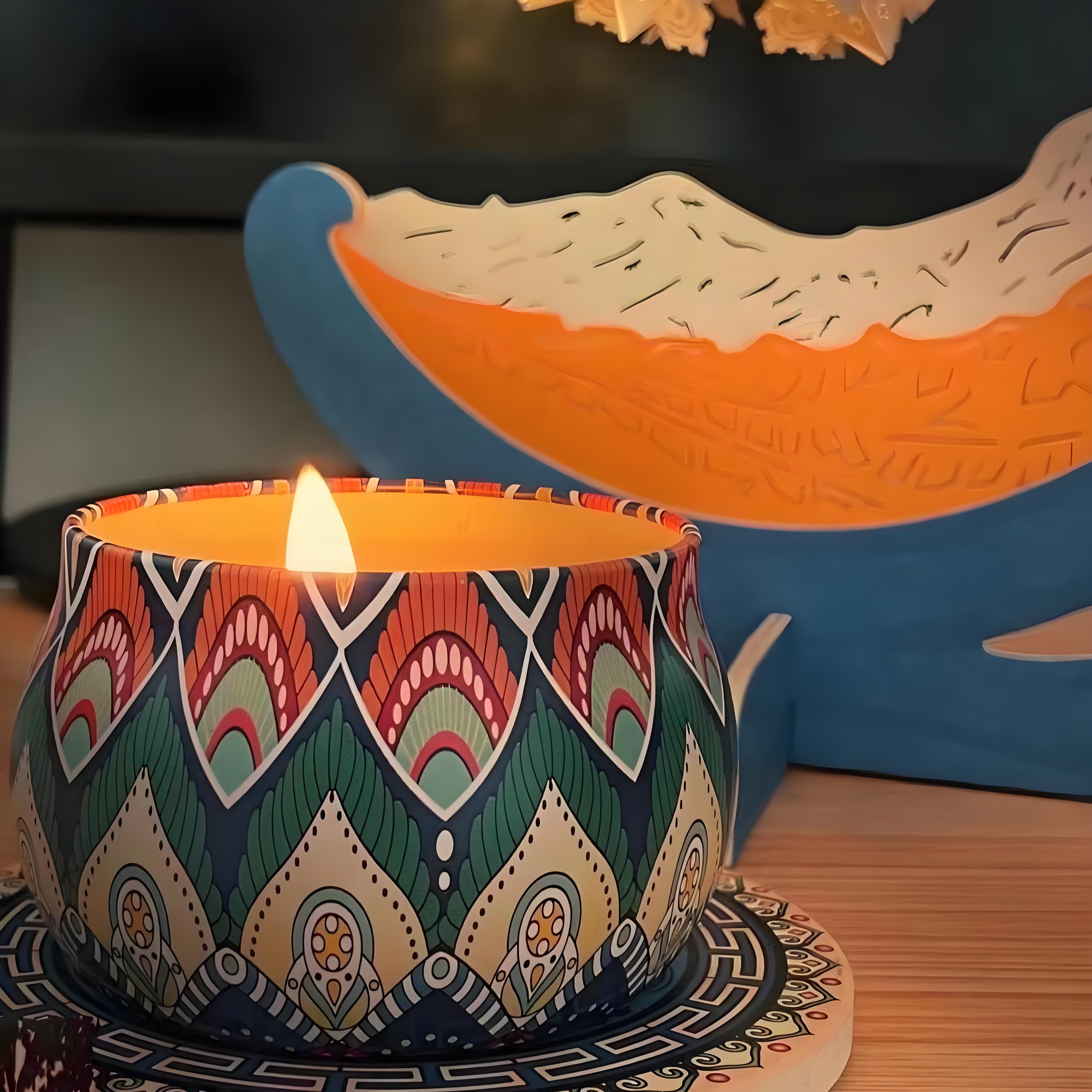Gold-Wave Chasing Deer
United Nations Registration No.00087
Heritage Since
Weaving Techniques Patented by Ming Dynasty Imperial Workshops 1381 AD
Collector Grade
Threads Woven at 1,200 Threads/Square Inch
Manual Hours
0 Digital Aids — Pure Handloom as in 1420 Nanjing Weaving Bureau
📜 Story Behind the Craft
In traditional culture, the deer is more than a gentle creature—it is a symbol of nobility, immortality, and fortune. This piece reimagines the deer in motion, gracefully charging through auspicious waves with a lingzhi in its mouth.
The sacred fungus, often seen in tales of immortality, merges with the deer—whose pronunciation mirrors “lu”, meaning official prosperity. Together, they represent a journey toward flourishing blessings and dignified longevity. The rising motion conveys hope, action, and an unwavering pursuit of the future.
📐 Product Specifications
- Dimensions (overall): 16.5 × 25.6 × 2 inches
- Artwork Size: 8.3 × 13 inches
- Materials: 100% mulberry silk with fine brocade detailing, gold-toned wooden frame
- Display Format: Vertical wall-mounted décor
- Packaging: Silk-covered collector’s box
🤝 Made with Care
- Individually embroidered using heritage Yunjin techniques
- Constructed from natural silk threads and environmentally friendly dyes
- Free from industrial additives or plastic-based textiles
- Carefully framed by artisans for long-lasting preservation and display
🧵 Craftsmanship & Ingredients
The artwork is handwoven on jacquard looms using Nanjing’s time-honored Yunjin silk weaving method. Fine gradations in gold and blue tones are achieved through layered weft embroidery, while the deer’s streamlined form is accented with vivid red detailing—conveying grace and movement. The use of metallic threads adds shimmer to the background, elevating both texture and depth.
🌏 Artisan & Origin Spotlight
Crafted by senior artisans from the Nanjing Yunjin Research Institute, this piece bridges ancient imperial aesthetics with modern collectible art. Each section of the deer and wave motifs reflects careful planning, technical precision, and a reverence for mythological themes from Chinese legend.
🏛️ Cultural Heritage Recognition
The Yunjin weaving technique dates back over 1,600 years and was once reserved exclusively for imperial robes and ceremonial gifts. It is recognized globally for its intricacy, symbolic richness, and cultural resonance.
UNESCO Recognition:
Nanjing Yunjin Brocade Weaving
Inscribed on the UNESCO Intangible Cultural Heritage of Humanity list in 2009
ID: UNESCO ICH No.00087
Our Promise to You
From quality to care, we’re here to make your experience smooth and meaningful.









